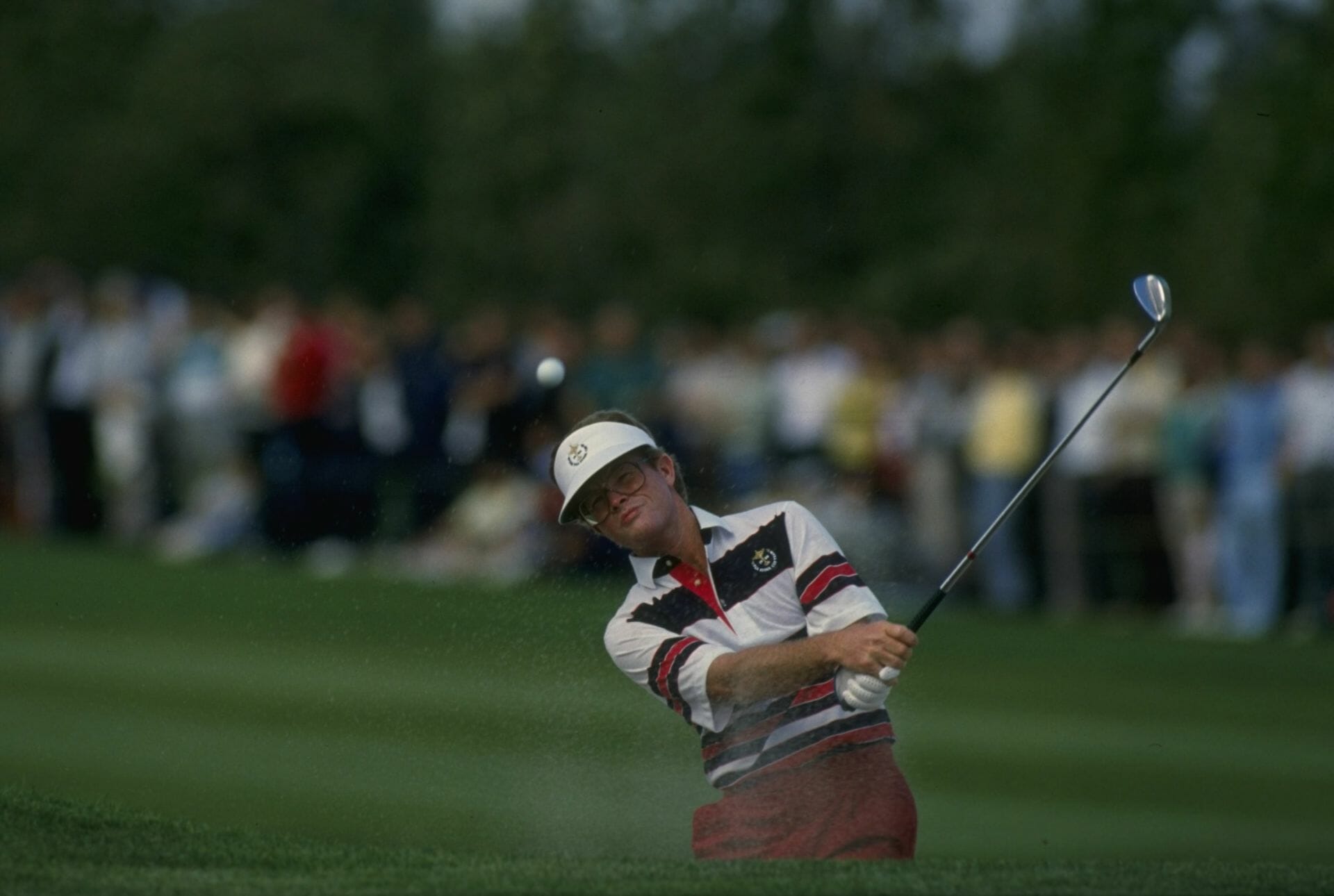In a competition that’s been synonymous with the likes of Seve Ballesteros and Arnold Palmer, it’s easy to see how somebody like Tom Kite can be overlooked. Not flamboyant and temperamental like the Spaniard, nor charming and cool like the king, Kite had a flavour all his own and it’s safe to say it wasn’t to everyone’s taste.
Where Palmer and Ballesteros were showmen with the looks to match, Kite had the proverbial face for radio. Due to chronic near-sightedness (far from ideal for a golfer), his visage was framed by thick jam jar-like glasses, which he wore nestled beneath an old-fashioned golf visor that only certain individuals could pull off. And he wasn’t one of them.
Ironically, in later stages on the Champions Tour circuit, Kite would trade the glasses for laser eye surgery, and the visor for a panama hat, and dare I say it, looked pretty elegant. Elegance is not a word that was commonly associated with Kite’s game, however, but as we will go on to show, there is a lot more to the sport than looking good.
Born in Texas, Kite began playing golf at an early age and earned himself a scholarship to the University of Texas, where he honed his skills alongside teammate Ben Crenshaw. Kite graduated in 1972 and immediately turned professional, successfully navigated the choppy waters of PGA Tour Q-School to arrive on the big stage.
Similar to his appearance, Kite’s game wasn’t flashy. Relatively slow, often ponderous, and not particularly long, Kite was known for his grit and tenacity. In his first year on Tour, he made 31 cuts and missed just three, steadily progressing until he captured his first professional victory in 1976, posting top-5 finishes in The Masters and The Open Championship as well.
Not yet eligible for Ryder Cup selection in 1977 – back then, the PGA Tour required players to be members for six years before qualifying for selection – Kite had to wait until 1979 to make his debut, which incidentally, was the first time that the continental Europeans took part. Kite ended with three wins from a possible four, including a singles victory over Tony Jacklin to kickstart what would be the greatest Ryder Cup singles record until Colin Montgomerie surpassed him in the next century.
The 1981 United States Ryder Cup team is arguably the greatest side ever assembled in the sport. Of the 12 players to qualify, only rookie Bruce Lietzke would finish his career without a major championship. Alongside Kite was old Texas teammate Ben Crenshaw, along with all-time greats such as Jack Nicklaus, Tom Watson and Lee Trevino.
Unsurprisingly, the Americans marched to victory with Kite picking up three-and-a-half points from four matches, taking the considerable scalp of Sandy Lyle in the singles on this occasion.
In total, Kite would make seven Ryder Cup appearances as a player from 1979 to 1993 and would captain the US side in 1997. Not only did his cup career coincide with the European inclusion, but he would contend with arguably the greatest crop of players that the continent has ever produced. Seve Ballesteros, Nick Faldo, Ian Woosnam, Bernhard Langer, Sandy Lyle, Jose Maria Olazabel, and Colin Montgomerie would all line up opposite, and it was in this era that the competition was reborn as the great cup competition that we know today.
Kite, who would win the US Open in 1992 and amass a further 26 top-10 finishes in major championships, became one of the toughest and best match-play golfers on the planet. Undefeated in singles play, his record in seven appearances reads five wins and two halves. His overall record stands at 15-9-4, and he holds jointly holds two records for the heaviest defeat inflicted on opponents, beating Howard Clark 8&7 in the 1989 singles, and partnering Hale Irwin to beat Ken Brown and Des Smyth 7&6 in foursomes.
Kite was by no means finished with the Ryder Cup after his final playing appearance in ’93. Having failed to qualify for the 1995 US team, Kite was awarded the captaincy for the 1997 Ryder Cup where he would go up against a familiar opponent in Seve Ballesteros at Valderrama, 24 years after they had shaken hands, each settling for an epic half-point in the singles in ’73.
Now in his 48th year, and playing an abbreviated schedule, Kite turned back the clock, finishing tied-tenth in the Open Championship, fifth in the PGA Championship and beating everybody except Tiger Woods in the Masters. When the qualification process ended just weeks after the PGA Championship, Kite found himself in 11th place in the rankings (10 automatically qualified along with two captain’s picks) and would’ve been more than justified in selecting himself like Tiger Woods did at the most recent Presidents Cup.
But Kite, perhaps displaying unnecessary humility, opted for Lee Janzen and Fred Couples instead.
That Ryder Cup at Valderrama will rightly go down as one of the greatest matches in the event’s history, with Seve’s Europeans clinching it by the narrowest of margins.
We will always be left to wonder whether an eighth playing-role for Kite would’ve produced a different outcome.
A true legend of the Ryder Cup.
























Leave a comment